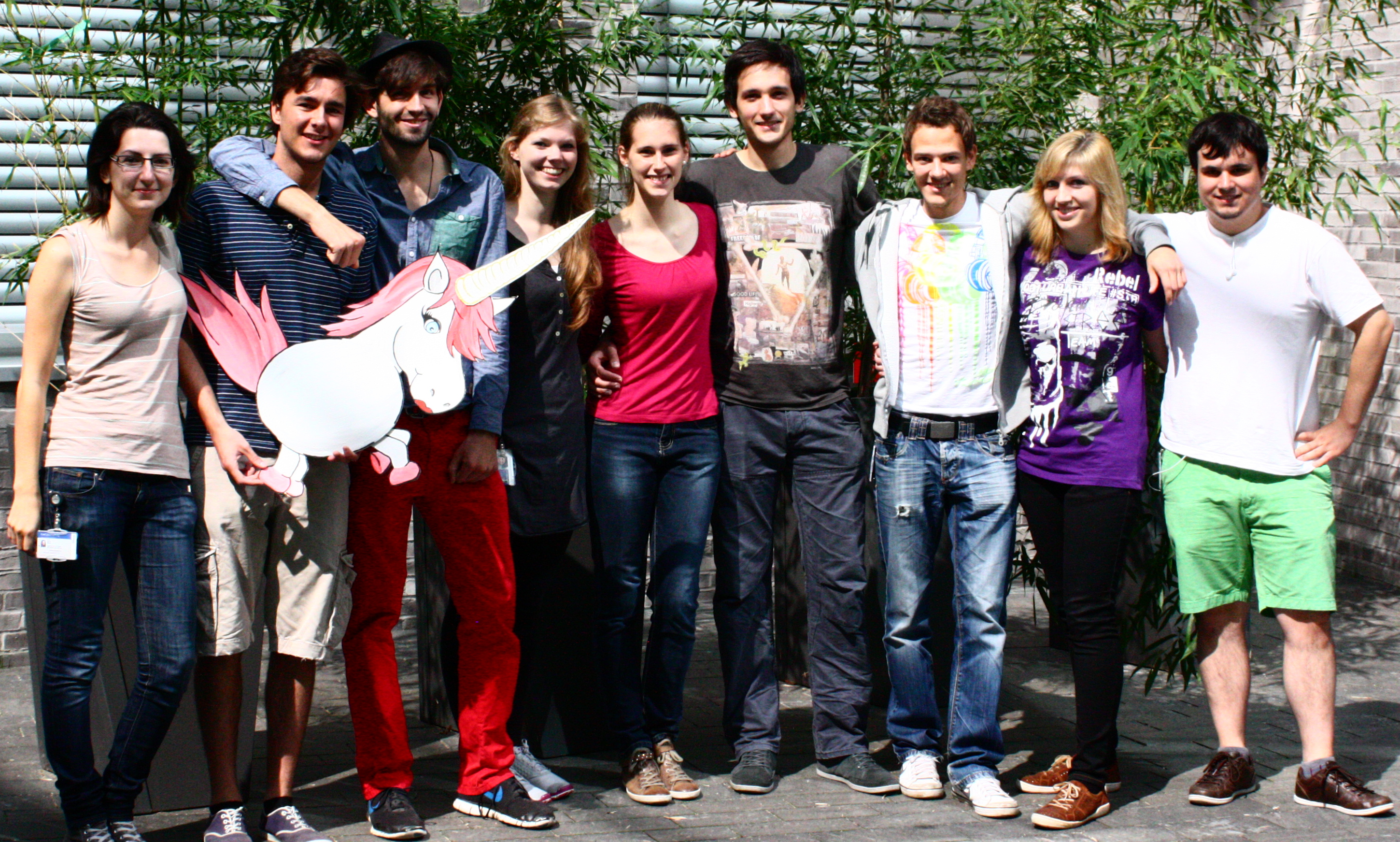Team:TU-Munich/Team/Collaborations
From 2013.igem.org
m (→Visiting Freiburg iGEM team 2013) |
(→Collaboration with Dundee iGEM team 2013) |
||
| Line 18: | Line 18: | ||
[[File:TUM13_Collaboration_Dundee.png|thumb|right|250px|'''Figure 3:''' Shipment from the Dundee 2013 iGEM team.]] | [[File:TUM13_Collaboration_Dundee.png|thumb|right|250px|'''Figure 3:''' Shipment from the Dundee 2013 iGEM team.]] | ||
| - | The [https://2013.igem.org/Team:Dundee Dundee] iGEM team 2013 is also working on bioremediation: The toxin microcystein is released into the water from lysed cyanobacteria and appears in great amounts during algal blooms. This cyclic peptide toxin covalently binds the protein phosphatase type 1 (PP1) and is thereby toxic for mammals. The idea of the Dundee iGEM team is to express the PP1 protein as an absorber for microcystin. We received their PP1 BioBrick, converted it from RFC 10 to RFC 25 and constructed some expression plasmids to transform ''Physcomitrella patens'' in order to apply Dundee's molecular mop in an aquatic, photoautotrophic chassis and thus expand their project´s applicability. | + | The [https://2013.igem.org/Team:Dundee Dundee] iGEM team 2013 is also working on bioremediation: The toxin microcystein is released into the water from lysed cyanobacteria and appears in great amounts during algal blooms. This cyclic peptide toxin covalently binds the protein phosphatase type 1 (PP1) and is thereby toxic for mammals. The idea of the Dundee iGEM team is to express the PP1 protein as an absorber for microcystin. We received their PP1 BioBrick, converted it from RFC 10 to RFC 25 and constructed some expression plasmids to transform ''Physcomitrella patens'' in order to apply Dundee's molecular mop in an aquatic, photoautotrophic chassis and thus expand their project´s applicability. The moss plants having our synthetic moss receptor with an extracellular PP1 were successfully obtained. Please see our [xx GM-Moss] results page to hear more from this great collaboration.<br> |
| + | We also want to congratulate the Dundee iGEM team 2013 for their success at the European Jamboree: Well done Scots! | ||
<br><br><br><br><br> | <br><br><br><br><br> | ||
Revision as of 19:16, 19 October 2013
Collaboration with Glowing Plants
We contacted the Glowing Plant Team which set themselve the goal to develop glowing transgenic A. thaliana plants using luciferase. They were quite interested in our idea to use transgenic moss plants as light source and they are planning to meet us in Munich at the end of October. They promised us to post our project video on their blog as soon as it is finished.
Collaboration with Dundee iGEM team 2013
The Dundee iGEM team 2013 is also working on bioremediation: The toxin microcystein is released into the water from lysed cyanobacteria and appears in great amounts during algal blooms. This cyclic peptide toxin covalently binds the protein phosphatase type 1 (PP1) and is thereby toxic for mammals. The idea of the Dundee iGEM team is to express the PP1 protein as an absorber for microcystin. We received their PP1 BioBrick, converted it from RFC 10 to RFC 25 and constructed some expression plasmids to transform Physcomitrella patens in order to apply Dundee's molecular mop in an aquatic, photoautotrophic chassis and thus expand their project´s applicability. The moss plants having our synthetic moss receptor with an extracellular PP1 were successfully obtained. Please see our [xx GM-Moss] results page to hear more from this great collaboration.
We also want to congratulate the Dundee iGEM team 2013 for their success at the European Jamboree: Well done Scots!
Collaboration with Paris-Saclay iGEM team 2013
The Paris_Saclay iGEM team is working on the detection and degradation of polychlorinated biphenyl (PCB) in the context of bioremediation. We arranged a skype-meeting, presented our projects to each other and agreed to exchange some of our coding BioBricks completed for this year´s competition in order the test them in different chassises.
Collaboration with Op.N
When we wondered how a moss filter could be implemented, we came across the NY PARALLEL NETWORKS concept which was designed by Op.N (Ali Fard and Ghazal Jafari). Op.N's work considers "critical junction of architecture, landscape, and urban processes". It is based in Cambridge and Toronto. Ali Fard and Ghazal Jafari are researcher at Harvard Graduate School of Design.
We got in touch via E-Mail and found Ali and Ghazal interested in our ideas and willing to allow us the usage of their image material used at the ONE PRIZE competition.
Visiting Freiburg iGEM team 2013
During our trip to Freiburg on August30th we met the iGEM team of Freiburg 2013. Along with a guidance through their lab and the Signalhaus they organized a city tour for us. This day ended with a barbecue together with the iGEM team. At this point we would like to thank you for your hospitality!
Exchange of urgently needed BioBricks
LMU Munich iGEM team 2012
We received the fluorescent proteins GFP, mKate2 and mVenus in RFC 25 from the 2012 Team of LMU Munich.
Tuebingen iGEM team 2013
We sent our pTUM100 vector system (BBa_K801000) from the 2012 competition to the iGEM Team of Tuebingen.
Uppsala iGEM team 2013
We provided the iGEM Team Uppsala with CHS consless (BBa_K801095), 4CL consless (BBa_K801093) and PAL consless (BBa_K801091) from the 2012 competition.
 "
"








AutoAnnotator:
Follow us:
Address:
iGEM Team TU-Munich
Emil-Erlenmeyer-Forum 5
85354 Freising, Germany
Email: igem@wzw.tum.de
Phone: +49 8161 71-4351